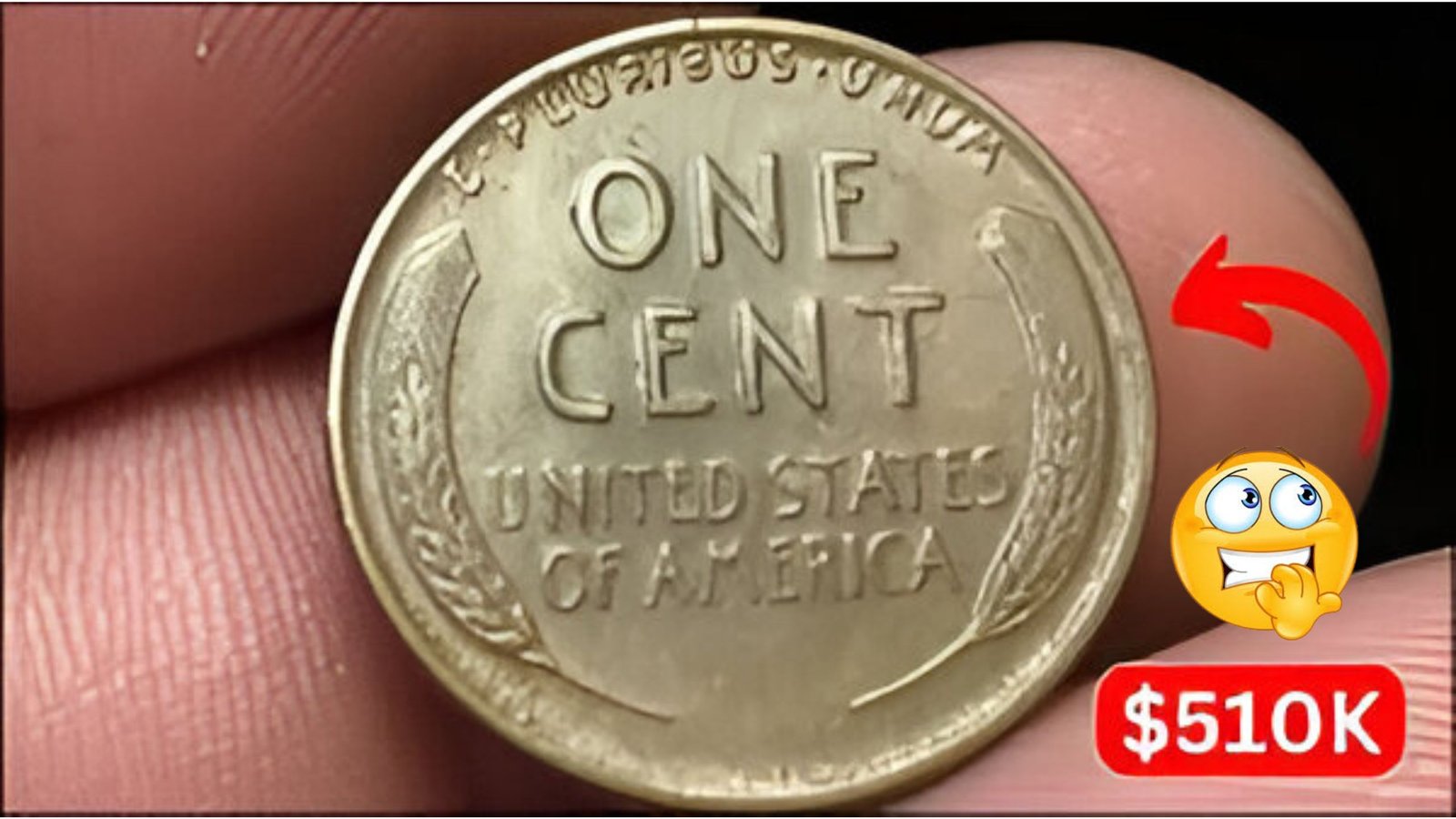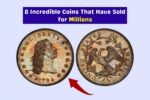The Lincoln Wheat Penny Valued at $510K: Most of us rarely give a second thought to the pennies we receive as change. These small copper coins often end up forgotten in jars, cup holders, or between sofa cushions. But what many people don’t realize is that some of these seemingly ordinary pennies could be worth a small fortune. Certain rare Lincoln Wheat Pennies have sold for as much as $510,000 at auction! Even more fascinating is the possibility that some of these valuable coins might still be circulating in everyday transactions, perhaps even sitting in your own collection of loose change right now.
The Birth of an American Icon
The Lincoln Wheat Penny made its first appearance in 1909 to honor the 100th anniversary of President Abraham Lincoln’s birth. This coin marked a significant turning point in American currency design. Before this innovation, U.S. coins typically featured symbolic figures like Lady Liberty rather than actual historical figures. The Lincoln penny changed this tradition, becoming the first regular U.S. coin to display the portrait of a real person.
The coin’s design, created by artist Victor David Brenner, featured Lincoln’s distinguished profile on the front and two elegant wheat stalks on the reverse side. This distinctive wheat design gave the penny its popular nickname – the “Wheat Penny.” Though it began as a simple tribute, this humble coin would eventually become one of the most collectible items in American numismatic history.
The Wartime Mistake That Created a Fortune
During World War II, the United States faced critical material shortages as resources were diverted to support the war effort. In 1943, copper became so essential for military equipment that the U.S. Mint made a dramatic decision: pennies would be produced using zinc-coated steel instead of copper. These 1943 “steel cents” had a silvery appearance and felt noticeably lighter than traditional pennies.
However, in a remarkable twist of fate, a small number of copper blanks from 1942 accidentally made their way into the coin presses. This manufacturing error resulted in the creation of copper 1943 Lincoln pennies – coins that were never intended to exist. With only about 20 known examples in the world today, these rare pennies have become legendary among collectors. A 1943 copper penny in excellent condition can command a price of up to $510,000 at auction – truly a life-changing find for anyone lucky enough to discover one.
Beyond the Famous 1943: Other Valuable Wheat Pennies
While the 1943 copper penny often steals the spotlight, several other Lincoln Wheat Pennies are highly prized by collectors. The 1909-S VDB penny represents the very first edition of the coin, minted in San Francisco with the designer’s initials “VDB” visible on the reverse. With only 484,000 produced before public criticism led to the removal of these initials, this variety is now quite valuable.
The 1914-D (Denver mint) penny is another treasured find due to its limited mintage. Equally fascinating is the 1922 “Plain” penny, famous for missing its mint mark due to a die error. Another collector favorite is the 1955 “Double Die” penny, which shows noticeable doubling in the date and lettering due to a misalignment during the minting process. Each of these coins tells a unique story about American history and minting techniques, making them worth far more than their face value.
How to Identify Potentially Valuable Pennies
Identifying a valuable penny begins with checking the date, as certain years like 1909, 1914, 1922, 1931, 1943, and 1955 are particularly significant. For 1943 pennies specifically, a simple magnet test can be revealing – a genuine copper 1943 penny won’t stick to a magnet, while the common steel versions will. The mint mark, located just below the date, is another important detail to examine. An “S” indicates San Francisco, “D” stands for Denver, and no mark means the coin was produced in Philadelphia.
If you believe you’ve found a rare penny, resist the urge to clean it. Surprisingly, cleaning can significantly reduce a coin’s value in the eyes of collectors. Instead, handle the coin carefully by its edges and place it in a protective holder. For potentially valuable finds, professional coin grading services can authenticate your discovery and provide protective encapsulation that helps preserve its condition and value.
The Democratic Hobby of Coin Collecting
One of the most appealing aspects of collecting Lincoln Wheat Pennies is their accessibility. Unlike many valuable collectibles locked away in museums or private collections, these potentially valuable coins could still be found in circulation. They might be hiding in an old coffee can in your garage, mixed with other coins in a drawer, or even handed to you as change during your next purchase at the grocery store.
This accessibility makes coin collecting a uniquely democratic hobby. Anyone can participate regardless of budget or background. All it takes is some knowledge, attention to detail, and perhaps a magnifying glass to get started. The thrill of the hunt becomes part of the experience – every handful of change could potentially contain a hidden treasure worth many times its face value.
Conclusion: Small Coins, Big Stories
The Lincoln Wheat Penny represents far more than just a piece of currency. Each coin carries with it a piece of American history – connecting us to our past, our presidents, our wars, and even our manufacturing mistakes. These small copper discs demonstrate how something seemingly insignificant and commonly overlooked can actually hold tremendous value, both financially and historically.
The next time you receive change after making a purchase, take a moment to look more closely at those pennies. What might appear at first glance to be just another one-cent coin could actually be a rare treasure worth thousands or even hundreds of thousands of dollars. In the world of numismatics, great fortunes sometimes come in the smallest packages.
Disclaimer: This article is for informational purposes only. Coin values vary based on condition, rarity, and market demand. Professional authentication is recommended before making any purchase or sale decisions regarding potentially valuable coins.



